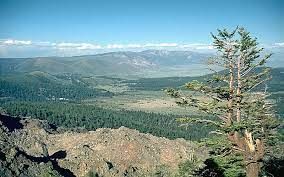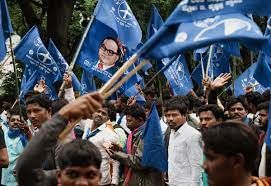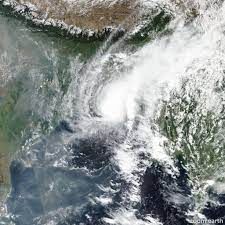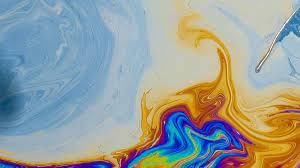UPSC Daily Current Affairs- 25th October 2023 | Current Affairs & Hindu Analysis: Daily, Weekly & Monthly PDF Download
GS-I
Long Valley Caldera
Subject: Geography

Why in News?
Scientists from the California Institute of Technology (Caltech) have detected over 2,000 earthquakes occurring within the Long Valley Caldera over the past few years.
About Long Valley Caldera:
- Location: Situated in the Eastern Sierra Nevada Mountains, California, USA.
- Geological Nature: Classified as a dormant supervolcano.
- Formation: Originated through a massive super-eruption roughly 760,000 years ago, ejecting a staggering 140 cubic miles of magma. This eruption blanketed a significant portion of east-central California with hot ash, even reaching present-day Nebraska.
- Recent Activity: Since 1978, this dormant supervolcano has experienced regular earthquake swarms, causing concerns regarding the possibility of an eruption.
What is Caldera?
- Definition of Caldera:
- A caldera is a depression formed when a volcano undergoes an explosive eruption, causing the land around the vent to collapse inwardly.
- It's the most destructive type of volcanic eruption.
- Formation of Calderas:
- Calderas result from the collapse of a volcano due to the release of most of its magma content.
- The collapse occurs without structural support beneath, creating a bowl-shaped depression.
- Uneven collapse can cause missing sections of the caldera's sides.
- Types of Calderas:
- Crater-Lake Calderas:
- These form after the collapse of a stratovolcano following a Plinian eruption, the most explosive type.
- Plinian eruptions release extensive lava, volcanic ash, and rocks.
- Shield Volcano Calderas:
- These don't result from single explosive eruptions.
- They subside gradually due to episodic lava release, known as lava fountaining, typical of shield volcanoes.
- Produce nested or terraced depressions rather than a large bowl-shaped caldera.
- Resurgent Calderas:
- These are the largest volcanic structures on Earth.
- Not linked to a specific volcano but result from the widespread collapse of extensive magma chambers.
- This collapse occurs due to highly destructive pyroclastic sheet flows, not seen in recent history.
- Crater-Lake Calderas:
The present and future of Dalit politics
Subject: Social Issues

Why in News?
The decline of independent Dalit political parties is linked to changing aspirations and a failure to address the rising class of politically aspirant Dalits, who seek economic mobility. The need for a shift from conventional identity-based politics to a more dynamic, economically focused approach is crucial for the survival of these parties. Ensuring democratic functioning and preventing dynastic tendencies is essential for relevance in the evolving political landscape.
Who Are Dalits?
Dalits, historically known as untouchables, are marginalized and oppressed communities in India who have faced severe discrimination and social exclusion based on their caste. They constitute a significant portion of the Indian population.
Dalits in India:
- Data Source: The latest information on the Dalit population in India is derived from the National Sample Survey Office's (NSSO) 75th Round Survey, carried out in 2017-18.
- Dalit Population: The survey revealed that there are approximately 272 million Dalits in India.
- Percentage of Total Population: This Dalit population represents about 17% of the total Indian population.
- Population Growth: There has been an approximate 3% increase in the Dalit population since the 2011 Census.
- Factors for Increase: The rise can be attributed to several factors, such as overall population growth, improved census methodology, and greater awareness of Dalit identity.
Dalit Movements in India:
- 19th Century: The Self-Respect Movement, led by E.V. Ramasamy Naicker, contested the caste system and championed social justice for Dalits.
- Early 20th Century: The Depressed Classes Movement, spearheaded by B.R. Ambedkar, advocated for Dalit rights, encompassing education, employment, and political participation.
- 1950s: Indian government enacted crucial laws to safeguard Dalit rights, such as the Untouchability (Offences) Act of 1955 and the Scheduled Castes and Scheduled Tribes (Prevention of Atrocities) Act of 1989.
- Late 20th Century: Dalit movements persisted in their quest for social justice and equality, giving rise to movements like the Dalit Panthers in the 1970s and the Bahujan Samaj Party in the 1980s.
Changing Political Landscape:
- Dalit political parties have historically played a significant role in empowering Dalits.
- However, these parties are currently facing organizational difficulties and are experiencing a decrease in electoral success.
- Notably, some Dalit leaders are transitioning to mainstream political parties, further diminishing independent Dalit political strength.
- The increasing aspirations of Dalit communities, driven by education and affirmative action policies, are causing them to seek political representation in other political factions.
- Major political parties' social welfare initiatives are influencing Dalit voters, thus shaping a new Dalit political mindset.
What Is the Need for Democratic Functioning?
- Adapting to Changing Aspirations: Independent Dalit parties must adjust to the evolving desires of Dalit communities, which now place equal importance on socio-economic advancement alongside identity-based politics.
- Preventing Dynastic Tendencies: Upholding democratic principles within these parties is crucial to thwart the rise of dynastic political practices, enabling grassroots leaders to influence the party's direction.
- Balancing Identity and Socio-economic Goals: These parties should formulate a political agenda that harmonizes identity-based politics with socio-economic priorities to meet the new aspirations of the Dalit community.
- Safeguarding Grassroots Participation: Granting grassroots leaders a role in the decision-making process of independent Dalit parties can guarantee that the concerns and needs of the most marginalized Dalits are effectively addressed.
Status of Dalit politics:
- Weakening Independent Dalit Parties: RPI and BSP face declining influence and organizational challenges.
- Fragmentation and Desertion: Internal divisions, leader departures, and shifting alliances affect party stability.
- Loss of Base Voters: RPI, BSP losing votes to dominant parties like BJP and Congress.
- Changing Aspirations: Dalits now seek meaningful political space due to education and affirmative actions.
- Shift from Identity to Aspiration: Transition from identity politics to socio-economic mobility aspirations is challenging traditional modes.
Future of Dalit Politics:
- Uncertainty for Independent Parties: Independent Dalit parties like RPI and BSP face an uncertain future due to internal issues and declining influence.
- Deepening Democracy: Some believe that as Indian democracy matures, mainstream parties may better represent Dalit interests, diminishing the need for separate Dalit parties.
- Aspiring Political Space: Dalits aspire for greater political participation, which could shape the future of Dalit politics.
- Socio-economic Focus: The future may see a shift from identity-based politics to socio-economic goals, aligning with evolving Dalit aspirations.
Decline in performance of Dalit political parties
- Electoral Erosion: Dalit political parties, including the BSP and RPI, have experienced a decline in their electoral performance, losing ground to mainstream parties.
- Loss of Base Support: Many Dalit parties have witnessed a loss of their core voter base to dominant regional and national parties like the BJP and Congress.
- Changing Aspirations: Evolving aspirations among Dalit communities, driven by education and affirmative actions, are challenging the parties’ ability to connect with their constituents.
- Shift to Socio-economic Focus: The traditional focus on identity politics is waning, and Dalit parties are struggling to adapt to the new emphasis on socio-economic mobility and development.
Significance:
- Empowerment of Dalits: Independent Dalit political parties have played a pivotal role in raising the political consciousness of Dalits and advocating for their rights and dignity.
- Political Representation: These parties have been instrumental in increasing the political representation of Dalits in India, giving them a platform to voice their concerns and grievances.
- Awareness and Solidarity: The existence of independent Dalit political parties has created awareness about Dalit issues and fostered a sense of solidarity among marginalized communities.
Challenges:
- Electoral Erosion: Independent Dalit political parties are facing a gradual decline in their electoral influence, with many Dalit leaders defecting to dominant regional and national parties.
- Shifting Aspirations: Rising aspirations among Dalit communities, driven by education and affirmative action, are causing a shift from identity-based politics to socio-economic mobility aspirations. This transition poses a challenge for Dalit parties that fail to adapt.
- Competition from Mainstream Parties: Dominant national and regional parties are actively vying for Dalit voters, further challenging the influence of independent Dalit political parties.
Initiatives and schemes by Indian Government for Dalits:
- Reservation Policy: India implements reservations for SC, ST, and OBC in education and government jobs, aiming to provide opportunities for historically marginalized communities.
- Scheduled Castes and Scheduled Tribes (Prevention of Atrocities) Act: Enacted in 1989, it legally protects Dalits and Adivasis from caste-based discrimination and violence, with strict penalties for offenders.
- Ambedkar Post-Matric Scholarship: A financial support program for Dalit and economically disadvantaged students pursuing higher education, covering tuition fees, books, and related expenses.
- Ambedkar Hastshilp Vikas Yojana (AHVY): Launched by the Ministry of Textiles, it aids Dalit artisans through training, market linkages, and financial support to promote their traditional handicrafts and skills.
Way Forward:
- Independent Dalit parties need to redefine their political agendas by integrating socio-economic mobility with identity politics.
- Democratic functioning within these parties must be encouraged to give space to grassroots leaders.
- A multi-polar Dalit politics may emerge as leaders, cadres, and Dalit masses disperse among different political parties, emphasizing their rising political values.
- The government should continue its affirmative action policies and address the socio-economic disparities faced by Dalits.
Source: The Hindu
Hamoon
Subject: Geography

Why in News?
The cyclonic storm “Hamoon” that has formed over the Bay of Bengal has rapidly intensified into a severe cyclonic storm as per recent reports.
About Hamoon:-
- Cyclone Hamoon is currently forming in the Bay of Bengal near India.
- Southern states of India can expect rain throughout this week.
- The India Meteorological Department (IMD) predicts that a deep depression in the West central Bay of Bengal will likely transform into a Cyclonic Storm in the next 6 hours.
- Cyclones Tej and Hamoon are being referred to as twin cyclones that originated in the north Indian Ocean.
- The last instance of such twin cyclones named Luban and Titli occurred in 2018.
About Cyclone:-
- A cyclone is a pattern of winds (or air mass) that circulates a low-pressure system.
- It rotates counterclockwise in the Northern Hemisphere and clockwise in the Southern Hemisphere.
- It is typically associated with wet and stormy weather.
Classification:-
- There are two types of cyclones:
- Tropical cyclones and
- Extra-tropical cyclones (also called Temperate cyclones)
Tropical cyclone:-
- Intense circular storm: This is a powerful circular weather phenomenon.
- Originates over warm tropical oceans: It begins in warm tropical sea regions.
- Characterized by low atmospheric pressure, high winds, and heavy rain: It is identified by low air pressure, strong winds, and intense rainfall.
- Formed over slightly warm ocean waters: It develops over moderately warm ocean waters.
- Temperature of the top layer of the sea needs to be at least 28°C: The sea's upper layer temperature must be a minimum of 28°C to support cyclone formation.
- April-May and October-December periods conducive for cyclones: Cyclones are more likely to occur during these time frames.
- 'Anticlockwise' rotation in the northern hemisphere; clockwise in the southern hemisphere: Cyclones rotate counterclockwise in the northern hemisphere and clockwise in the southern hemisphere.
- ITCZ in the Bay of Bengal during these periods: The Intertropical Convergence Zone (ITCZ) is present in the Bay of Bengal during these times.
Extratropical cyclones:-
- It occurs in temperate zones and high-latitude regions, though they are known to originate in the Polar Regions.
- These are active above the mid-latitudinal region between 35° and 65° latitude in both hemispheres.
- The direction of movement is from west to east and is more pronounced in the winter seasons.
Source: The Hindu
GS-II
United Nations at 76: From Inception to Evolution
Subject: International Relations

Why in News?
On this day in 1945, the United Nations (UN) was established amid a backdrop of global turmoil, emerging from the shadows of two devastating world wars.
- Post-World War Turmoil: Following the devastation of both World War I and World War II, global powers were grappling with the need for a more effective international organization to prevent future conflicts.
- Predecessor: The League of Nations, established in 1919 after World War I, laid the foundation for the UN’s creation but faltered during World War II.
- The Atlantic Charter: In August 1941, US President Franklin D. Roosevelt and UK PM Winston Churchill issued the Atlantic Charter, an affirmation that paved the way for the UN. It articulated shared principles for a better world.
- Birth of the Term ‘UN’: The term ‘UN’ was first coined by President Roosevelt in 1941 to identify the Allied nations against the axis powers.
- Declaration of the UN: On January 1, 1942, representatives of 26 Allied nations gathered in Washington DC to sign the Declaration of the UN, outlining the war objectives of the Allied powers. India, under British colonial rule, was among these nations.
- Formation and Ratification: The UN officially came into existence on October 24, 1945, with ratification by 51 nations, including five permanent members (France, Republic of China, Soviet Union, UK, and US).
- General Assembly Inauguration: The first meeting of the General Assembly took place on January 10, 1946.
- UN’s Core Goals: The UN was founded on four key goals: maintaining international peace and security, fostering friendly relations among nations, promoting international cooperation in problem-solving, and coordinating global actions toward common objectives.
- Membership Growth: Initially comprised of 51 member states, the UN’s membership expanded as independence movements and decolonization unfolded. Today, it boasts 193 member countries.
- Broadened Scope: Over 75 years, the UN has tackled numerous global issues, including health, environment, and women’s empowerment.
- Peace and Security: Prevented conflicts, mediated peace agreements, and conducted peacekeeping missions in places like Bosnia and Kosovo.
- Humanitarian Aid: Provided vital aid through agencies like WFP and UNICEF, offering food, shelter, and healthcare during crises.
- Human Rights: Established the Universal Declaration of Human Rights and monitors violations globally through mechanisms like the Human Rights Council.
- Health: Led efforts against diseases like smallpox and HIV/AIDS through WHO, addressing current threats like COVID-19.
- Refugee Support: UNHCR aids refugees and internally displaced persons while advocating for their rights.
- Environmental Advocacy: Raised awareness about climate change, negotiated the Paris Agreement, and promotes sustainability via UNEP.
- Genocide Prevention: Failed to prevent genocides like Rwanda and Srebrenica despite early warnings.
- Peacekeeping Challenges: Faced issues like misconduct allegations and difficulties in halting violence in missions like South Sudan.
- Veto Powers: Criticized for Security Council veto powers that hinder action and maintain power imbalances.
- Enforcement Limits: Reliant on member states for enforcement, leading to limited action in cases of non-compliance, as seen in the Iraq War.
- Lack of Representation: Critiqued for underrepresenting Global South countries in key decision-making bodies.
- Neoliberal Influence: Accused of promoting neoliberal economic policies, which can exacerbate inequalities, through associated organizations like the World Bank and IMF.
- 2020 Declaration: In a high-level UN General Assembly meeting commemorating 75 years of the UN, a declaration was adopted outlining goals for the next decade. These include protecting the environment, promoting peace, gender equality, digital cooperation, and sustainable financing.
- Decade of Action: The next ten years, designated as the “decade of action and delivery for sustainable development,” are considered critical for addressing global challenges, especially in the wake of the COVID-19 pandemic.
- The UN, born out of the ashes of conflict, has played a significant role in shaping the world’s course over the past 75 years.
- Its journey has been marked by both notable achievements and formidable challenges.
- As it enters a new decade with a renewed commitment to global betterment, the UN continues to evolve as a pivotal force in promoting international cooperation and addressing humanity’s most pressing issues.
Source: The Hindu
Nano DAP fertilizer
Subject: Governance

Why in News?
Recently, Union Home Minister Amit Shah inaugurated India’s first liquid nano di-ammonia phosphate (DAP) fertilizer plant.
- Talking to Akashvani, IFFCO chairman Dilip Sanghani said this plant will hugely benefit the farmers and also help reduce the import of DAP in the country.
About nano DAP fertilizer:-
- Establishment:2023.
- Established by: Indian Farmers Fertiliser Cooperative Limited (IFFCO )
- Place: Kalol in Gandhinagar, Gujarat.
- It is India’s first liquid nano-ammonia phosphate (DAP) plant.
- Nano liquid DAP fertilizeris is a concentrated phosphate-based fertilizer.
- DAP is the second most consumed fertilizer in the country after urea.
- It provides phosphorous nutrition throughout the crop growth and development cycle.
Advantages:-
- Diammonium phosphate (DAP) is the world’s most widely used phosphorus fertilizer.
- DAP is the second most consumed fertilizer in the country after urea.
- Nano-DAP will help to bring down India’s fertilizer import bill.
- It is also expected to contribute to bringing down the annual subsidy on non-urea fertilizers.
Significance:-
- It is an important beginning to make India self-reliant in the field of fertilizers.
- It is expected to boost India’s food grain production, ensuring food security.
Source: The Hindu
GS-III
What separates Classical and Quantum Chaos?
Subject: Science

Our atmosphere is a place of constant change and randomness. Predicting exactly what will happen can be really tough.
- Randomness in the Atmosphere: Earth’s atmosphere, a laboratory of randomness, constantly changes in terms of pressure, density, gas flow rates, and temperature, making the paths of gas molecules unpredictable.
- The Butterfly Effect: The “butterfly effect” illustrates the idea that a butterfly’s wings flapping in one place can trigger a storm elsewhere, emphasizing the sensitivity of chaotic systems to initial conditions.
- Deterministic Chaos: Chaotic systems, like a pinball machine, follow deterministic physical laws but exhibit seemingly unpredictable behavior. The term “deterministic chaos” implies that precise knowledge of the present is required for accurate future predictions.
- Diverse Applications: Chaos theory finds applications in various fields, from fluid dynamics and human heartbeat irregularities to voting patterns and planetary dynamics.
- Sensitivity to Initial Conditions: Chaotic systems are highly sensitive to their initial conditions, often leading to seemingly random behavior.
- Lyapunov Time: The predictability of a chaotic system depends on factors such as the accuracy of its initial state knowledge and the Lyapunov time, which varies from milliseconds for electrical circuits to millions of years for the inner solar system.
- Quantum Mechanics vs. Chaos: Quantum mechanics, while probabilistic, differs from chaos theory. Subatomic particles lack point-like locations, making it impossible to precisely determine their positions.
- Perturbation Theory: Quantum physics addresses mild disturbances in atomic systems using perturbation theory. Chaos, however, requires a distinct approach, leading to the field of quantum chaos.
- The Rydberg Atom: The Rydberg atom bridges classical and quantum domains. When an atom’s energy levels become nearly continuous due to high excitation, it exhibits classical behavior.
- Spectrum Signatures: Chaos in a Rydberg atom manifests in the spectrum of its energy levels, with irregularities that contrast with the randomness of non-chaotic quantum systems.
- Discrete Energy Steps: Quantum systems feature discrete energy levels, in contrast to classical systems with continuous energy. The Rydberg atom offers a link between these realms.
- Regularities in Chaos: Chaotic quantum systems surprisingly display strong regularities in the distribution of energy levels, an area ripe for exploration.
- Expanding Horizons: Quantum chaos is a burgeoning field of research with implications in thermalization, quantum information, and black hole quantum mechanics, presenting exciting challenges and opportunities.
Source: The Hindu
Sporanaerobium hydrogeniformans
Subject: Science and Technology

Recently, researchers found a new genus of anaerobic lignocellulose-degrading bacteria in the hot spring of Aravali, located in Ratnagiri district of Maharashtra.
- It is part of the Lachnospiraceae family, whose members are known as the most effective polysaccharide degraders due to their capacity to synthesise free or complicated hydrolytic enzymes.
- The structural elements of lignocellulosic agricultural wastes, cellulose and xylan, can be broken down by this bacterium.
- It can grow optimally at high temperatures of 45–50°C and an alkaline pH of 8.0.
- The bacteria may be a candidate for biohydrogen generation from agricultural leftovers in accordance with waste-to-energy legislation in India.
- The scientists found that the bacterium used the hexose and pentose sugars released during the hydrolysis of complex polymers like cellulose and xylan to make large amounts of hydrogen gas and byproducts including acetic acid, formic acid, and ethanol.
- It is known that very few bacteria can use the sugars hexose and pentose at the same time.
- Due to this characteristic, the bacterium is a crucial strain for the industrial generation of biofuels.
- These new bacteria possess a special metabolic route for converting a variety of simple and complex substrates into hydrogen and ethanol.
- Additionally, it emphasises the value of researching microbes in hostile habitats like hot springs, where rare and important species might be found.
Source: DTE
Intelligence Bureau
Subject: Science

Why in News?
The Delhi High Court recently ruled that the Intelligence Bureau stands exempted from the rigours of RTI Act by virtue of Section 24 (Act not to apply to certain organisations) thereof.
- IB is an internal intelligence agency of India that is used to gather intelligence from within India and also execute counter-intelligence and counter-terrorism tasks.
- In addition to domestic intelligence responsibilities, the IB is particularly tasked with intelligence collection in border areas, following the 1951 recommendations of the Himmatsinhji Committee (also known as the North and North-East Border Committee), a task entrusted to military intelligence organizations, prior to independence in 1947.
- It comes under the administrative control of the Ministry of Home Affairs.
- The IB activities are highly confidential, and no publications other than the internal ones reveal their arcane workings.
- Other Functions:
- Another major activity of the IB is passing on intelligence information to other Indian intelligence agencies as well as the police.
- It is responsible for granting basic safety clearances to Indian diplomats and judges before their national oath.
- It is also authorized to carry out wiretapping without a warrant.
- Composition:
- The Bureau comprises employees from law enforcement agencies, mostly from the Indian Police Service (IPS) or the Indian Revenue Service (IRS), and the military.
- The Director of Intelligence Bureau (DIB) has always been an IPS officer.
Source: Live Law
|
38 videos|5293 docs|1118 tests
|
















